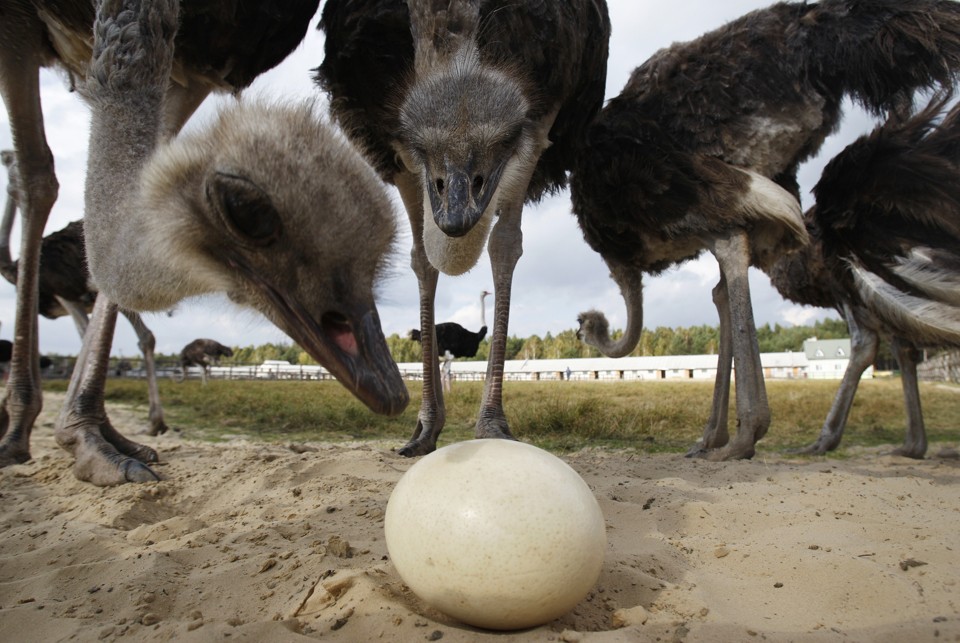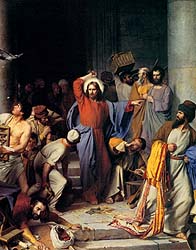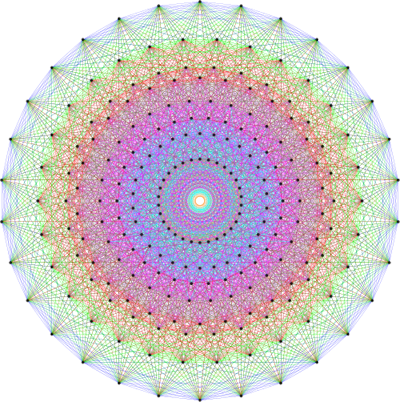via Boing Boing by Jason Weisberger
Always a treat to watch, Sammy is one of the best.
=============================
via The Observer by Laura Sibbald

In her series Flora, Florida-based artist Angela Deane takes postcards of vintage studio flower photos from the 70s and 80s and gives them a personality. “I like to think of this series as allowing mother nature to indulge in and express any mood she fancies,” says Deane, who paints facial features on to each plant. The flowers’ expressions are a reflection of her own mood, sometimes a reaction to the daily news, or inspired by something on the postcard that simply “brings forth a face”. She says: “Plant life is fragile and temporary, but ultimately I believe will outlast humans. A lot of the recent works have been plants getting the last laugh on our destructive species.”
Continue to view some stunning images.
=============================
via 3 Quarks Daily; Ed Yong in The Atlantic

Egg-scuse me?
When Mary Caswell Stoddard started measuring bird eggs from hundreds of species, she wasn’t expecting to learn that most eggs are not egg-shaped.
Think about an egg and you’ll probably conjure up an ellipse that’s slightly fatter at one end – the classic chicken egg. But chickens are outliers. Hummingbirds lay eggs that look like Tic Tacs, owls lay nigh-perfect spheres, and sandpipers lay almost conical eggs that end in a rounded point. After analyzing hundreds of species, Stoddard showed that the most common shape – exemplified by an unremarkable songbird called the graceful prinia – is more pointed than a chicken’s.
Continue reading
=============================
via OUP Blog by Jens Zimmermann

books by Chris Lawton. Public domain via Unsplash
What does hermeneutics mean?
Where did the term originate and how is it used in day-to-day life?
Jens Zimmermann, author of Hermeneutics: A Very Short Introduction, tells us 9 things everyone should know about hermeneutics.
Continue reading
=============================
via Boing Boing by Caroline Siede
It turns out lions, tigers, leopards, and jaguars are the only species of cat that can roar. SciShow explains why in this new video.
=============================
via Big Think by Robby Berman

Christ cleansing the temple (Carl Heinrich Bloch) via lds.org
It’s not entirely clear if this quote actually comes from the Dalai Lama or not, but it’s a good one:
People exist to be loved; objects exist to be used. The world is in chaos because these things are the other way round.The acquisition of money – and the things it buys – has been a crazy-making influence on mankind from as far back as we can tell. It’s served as a means of controlling others and as the reason for obsessive, injurious behaviors throughout history. An unquenchable thirst for wealth has been so continually destructive that every faith – no matter what else they may not see eye to eye on – has something similar to say about it.
=============================
via Boing Boing by Mark Frauenfelder

This film of New York City was shot in 1911, and it is in excellent condition. Everything is in sharp focus. It is as vibrant and picturesque as a Scorcese period film. Almost everyone wears a hat. All the men wear suits and ties. There are all kinds of public transportation – trolleys, cable cars, trains. Lots of horse-drawn carriages, and more automobiles than I would have guessed.
Continue reading
I hope you have better luck than I did at actually watching the film. I found all sorts of bumph about it but no film.
=============================
via Interesting Literature
A summary of an early English sonnet
As we’ve mentioned before, although he gets the credit for it, William Shakespeare didn’t invent the Shakespearean sonnet. That specific poetic form – also known as the English sonnet, and rhyming ababcdcdefefgg – was instead the innovation of a Tudor courtier and poet named Henry Howard, Earl of Surrey (1517-47), who, as well as making Shakespeare’s Sonnets possible, also invented the verse form that would make Elizabethan drama possible: blank verse. In short, the Bard had a lot to thank Henry Howard for.
Continue reading
=============================
via 3 Quarks Daily: Josefina Alvarez in Plus Magazine

Some visualisations of mathematical objects, like this one of the exceptional Lie group E8, are undoubtedly beautiful. But is maths by itself beautiful? (Image Jgmoxness, CC BY-SA 3.0.)
Maths is the language that explains our physical world, what the mathematician and physicist Eugene Wigner called "the unreasonable effectiveness of mathematics in the natural sciences". It is also the lightning that, sometimes unnoticed, precedes the thunder of technological innovations. Yes, mathematics serves and touches upon the advances of practically every field. Still, as a discipline unto itself, mathematics is an extraordinary example of the human pursuit of knowledge, versatile and capable of unifying areas that appear very different. The mathematician Michael F. Atiyah referred to these qualities in an address to the London Mathematical Society titled The unity of mathematics. In his own words, "The aspect of mathematics which fascinates me most is the rich interaction between its different branches, the unexpected links, the surprises,...".
Continue reading
=============================
via Big Think by Paul Ratner
The periodic table is an important but rather dry scientific tool. It lists all the chemical elements, ordered by their atomic numbers. Elements with similar behavior are grouped in the same column (called a group), with metals generally on the left and non-metals (gases) on the right. Rows are called “periods” - hence, periodic table.
All in all, it can be hard for someone not well versed in chemistry to know what all these elements are and where they are used. Enter Keith Enevoldsen, a Boeing software engineer with a degree in physics who created a super-helpful version of the periodic table that makes it easy to see what all the elements can do. His table is interactive and features helpful pictures. Impress your friends and yourself by learning the applications of astatine (radioactive medicine), molybdenum (cutting tools like scissors), krypton (flashlights) and other elements.
Continue reading
No comments:
Post a Comment